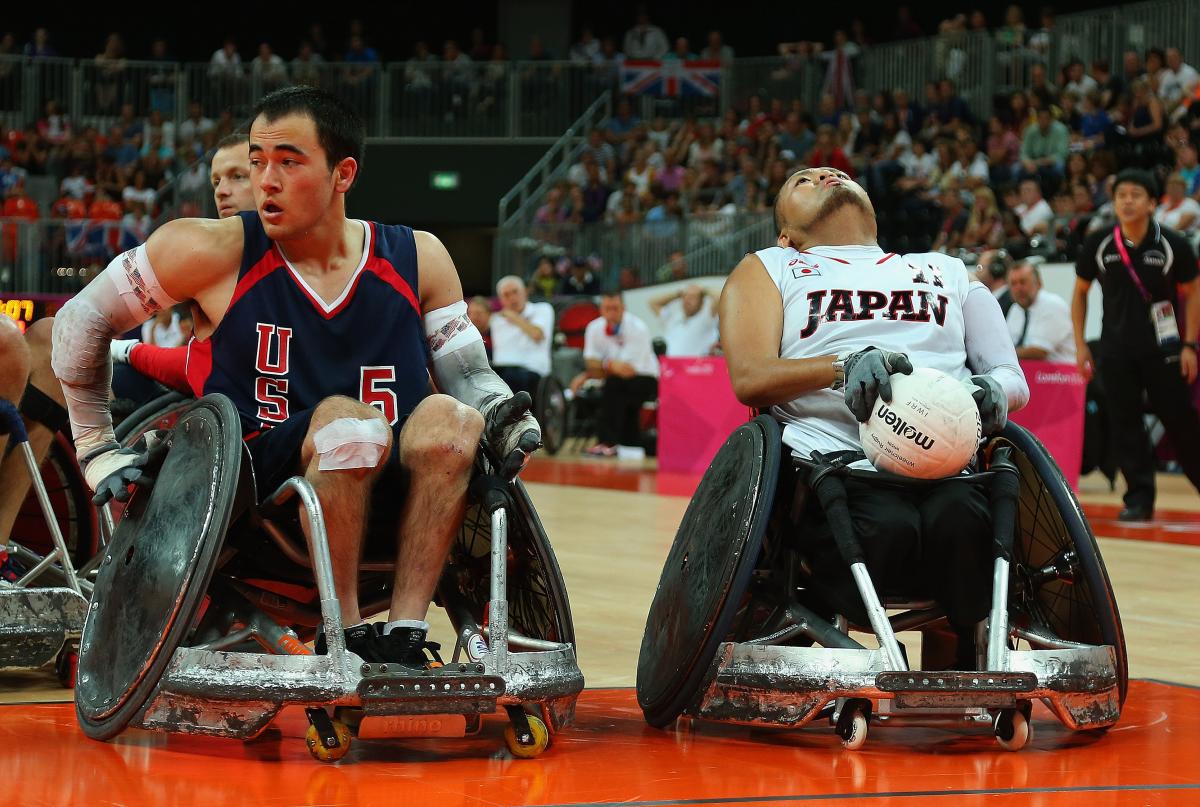Para sport explained: Travelling for wheelchair sports
An inside look at how wheelchair sport athletes travel as a team. 20 May 2017
Chuck Aoki
Traveling is a major part of being an athlete. For wheelchair sport athletes, there is extra luggage they have to factor in.
Imagine a wheelchair basketball team of 15 players traveling for an international competition. That would be 15 playing chairs, the athletes’ day chairs, personal luggage and other equipment that the airlines have to prepare for.
While traveling is routine for German wheelchair basketball player Laura Furst and US wheelchair rugby player Chuck Aoki, it can be a process. They share some insight on what it is like to travel as a Para athlete.
Briefly describe your travel preparations.
Laura Furst (LF): For the training camps in Germany most of the time people take their cars and trains because we come from all over Germany. But when we travel together as a team to competitions, we normally fly together and it’s going to be 12 players plus our staff. Then every player has one playing chair and most of the player’s also have a day chair. So it’s almost 20 chairs needing to be packed with us. So once we get to the airport it’s usually a huge amount of luggage that needs to be stowed and the airlines need to be informed.
For the most part it works out nice but you have to make sure your equipment is stowed correctly, that the wheels are in a good position so that they don’t get broken during the flight.
Chuck Aoki (CA): Each athlete has their own packing routine. Personally, I always start the day before, although I make sure to order any extra supplies I might need a couple weeks ahead of time! Rugby is a comprehensive sport, beyond my rugby chair there are countless other equipment needed: gloves, tape, sleeves, tubes, tires, extra wheels, extra castors, various different extra pieces that can keep me rolling in any situation. In other words, just getting ready for the trip requires several weeks of planning.
We usually have 12 athletes, so multiply what I just said by 12 [for the number of wheelchairs], plus I am probably one of the lowest maintenance people.
What is the boarding process like for the athletes who use day chairs?
LF: There are boarding chairs that are very small. So you can travel with your day chair up to the aisle, and then you transfer to the boarding chair so that you can fit through the aisle. And then they bring you to your seat. If it’s a longer flight they leave the boarding chair there so you can use the bathroom.
CA: We always pre-board, so we go on first. The process boarding usually goes off fairly smoothly, as long as the airlines are prepared for us.
What are some ways to improve accessibility at airports?
CA: Accessibility in general is OK. However the security process can often be slow. I have TSA [Transport Security Administration] pre-check which saves me tons of time, but before, the process of getting searched every time was quite a hassle. Planes themselves could use a lot of accessibility improvements, such as ways to board easier than an aisle chair, and ways to reach the bathroom.
LF: For flights I think it’s fine. What can be annoying is when they can’t bring your day chair to the aisle once you’ve landed because they think it’s luggage, and it’s bulky luggage so you have to take the airport wheelchair which is not the best. So that’s one thing that can improve, just organisation because that really would help if the day chairs are at the aisle once you arrive. But other than that I think traveling by plane works really nice.
What are common reactions you get when traveling by plane?
CA: Typically, we will get asked if we are a team, as we usually wear the same thing when we travel. Often we are mistaken as basketball players, which we gently correct, and then people appear much more impressed we play rugby.
Travelling with a team or even by yourself is probably one of the highlights of being a Paralympic athlete. You feel like a jet setter, and seeing the world, representing your country, is worth any struggles we may have. Many people get frustrated while traveling, but I prefer to just relax, and enjoy the ride.
Editor’s note: Para sport explained is a feature series on Paralympic.org that will publish once a month, helping the public understand different aspects of the Paralympic Movement.




